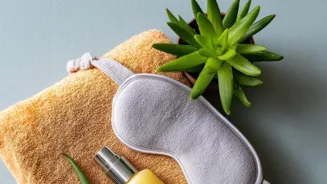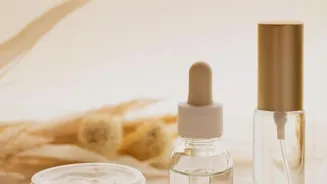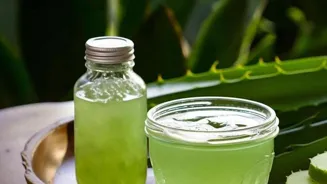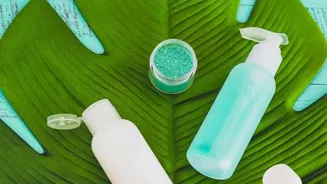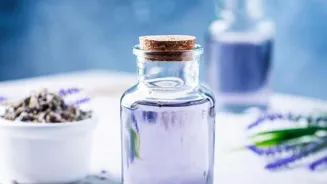Unlock Radiant Skin: The Power of Exfoliation & How to Do It Right. Dive deep into skincare secrets!
Namaste, lovelies! Ever wondered why your skin sometimes looks dull, feels rough, or just plain isn't
glowing like it should? Chances are, your skin is begging for some good old exfoliation. Think of it as giving your skin cells a fresh start, shedding the old and welcoming the new.
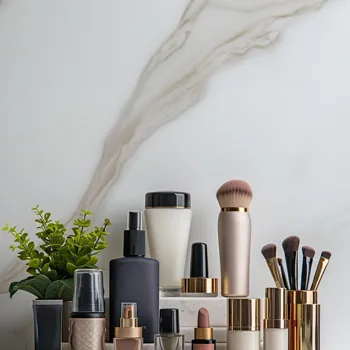
It's like decluttering your wardrobe, but this time, you're decluttering your skin! Exfoliation isn't just a fancy spa treatment; it's a fundamental part of a healthy skincare routine, no matter your skin type or budget.
So, let's dive deep into the world of exfoliation and learn how to give your skin the love it deserves. We'll explore why it's so important, the different ways to do it, and how to avoid common mistakes that can irritate your precious skin.
Get ready to unveil a smoother, brighter, and healthier you!
Regular exfoliation benefits skin health and product absorption
Now, you might be thinking, "Exfoliation? Sounds like a lot of work!" But trust me, it's simpler than you think. Our skin is constantly renewing itself, shedding dead skin cells every single day.
However, sometimes these dead cells don't shed completely, leading to clogged pores, a dull complexion, and even acne breakouts. That's where exfoliation comes in. It helps to remove these dead cells, revealing the fresh, healthy skin underneath. Not convinced yet?
Well, exfoliation also helps to improve blood circulation, stimulate collagen production (hello, youthful skin!), and allows your skincare products to penetrate deeper and work more effectively. Think of it as prepping your skin to receive all the goodness it needs.
It's like watering a plant after removing the weeds; the nutrients can finally reach the roots.
Two exfoliation types: physical & chemical. Choose based on skin type & preference
There are primarily two types of exfoliation: physical and chemical. Physical exfoliation involves using tools or scrubs to manually remove dead skin cells. Think of scrubs with tiny beads, brushes, or even a washcloth.
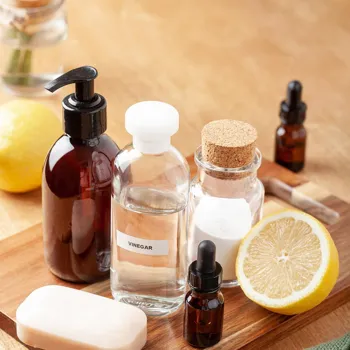
Chemical exfoliation, on the other hand, uses acids or enzymes to dissolve the bonds that hold dead skin cells together. This includes products like AHAs (alpha-hydroxy acids) and BHAs (beta-hydroxy acids). Choosing the right type of exfoliation depends on your skin type and preferences.
If you have sensitive skin, you might want to stick to gentle chemical exfoliants or very soft physical exfoliants. If you have oily or acne-prone skin, you might be able to tolerate stronger physical or chemical exfoliants. Remember, it's all about finding what works best for you.
It's like finding the perfect spice level for your chai; not too strong, not too weak, just right!
Exfoliate wisely: less is more, patch test before use, sunscreen is key
Now, let's talk about how to exfoliate like a pro. First and foremost, less is more. Over-exfoliating can strip your skin of its natural oils, leading to dryness, irritation, and even breakouts. A good rule of thumb is to exfoliate once or twice a week, depending on your skin type.
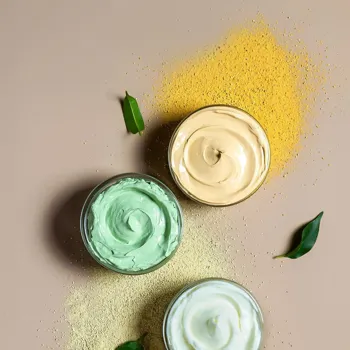
When using a physical exfoliant, be gentle and avoid rubbing too hard. Think of it as polishing your precious jewellery; you wouldn't want to scratch it! When using a chemical exfoliant, follow the instructions carefully and start with a low concentration.
Always do a patch test on a small area of your skin before applying it to your entire face. And remember, sunscreen is your best friend, especially after exfoliation. Exfoliated skin is more sensitive to the sun, so don't forget to apply a broad-spectrum sunscreen with an SPF of 30 or higher.
Choose the right exfoliant wisely for your skin type
Choosing the right exfoliant can be overwhelming, with so many options available in the market. For physical exfoliants, look for scrubs with fine, round beads or granules. Avoid scrubs with large, jagged particles, as they can be harsh and irritating.
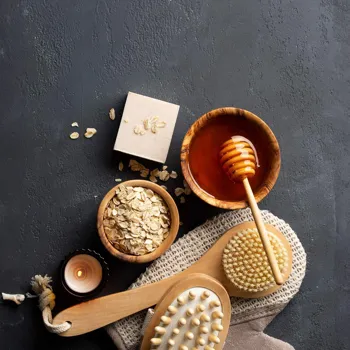
For chemical exfoliants, AHAs like glycolic acid and lactic acid are great for dry and mature skin, while BHAs like salicylic acid are ideal for oily and acne-prone skin. If you have sensitive skin, look for gentle exfoliants with ingredients like enzymes from papaya or pineapple.
You can also try using a konjac sponge, which is a natural and gentle exfoliating option. The key is to read the labels carefully and choose products that are specifically formulated for your skin type.
Finding the right exfoliant is like finding the perfect pair of shoes; it should fit comfortably and make you feel good!
Exfoliation key for healthy, glowing skin - care, patience, consistency
So, there you have it! Exfoliation is a powerful tool for achieving healthy, glowing skin. It's not about chasing perfection but about giving your skin the care and attention it deserves.
By incorporating exfoliation into your skincare routine and following these simple tips, you can unlock your skin's natural radiance and confidence. Remember to listen to your skin and adjust your routine as needed.
If you experience any irritation or redness, stop exfoliating immediately and consult with a dermatologist. And most importantly, be patient and consistent. Rome wasn't built in a day, and neither is healthy, glowing skin! Keep exfoliating, keep shining, and keep embracing your beautiful self!
